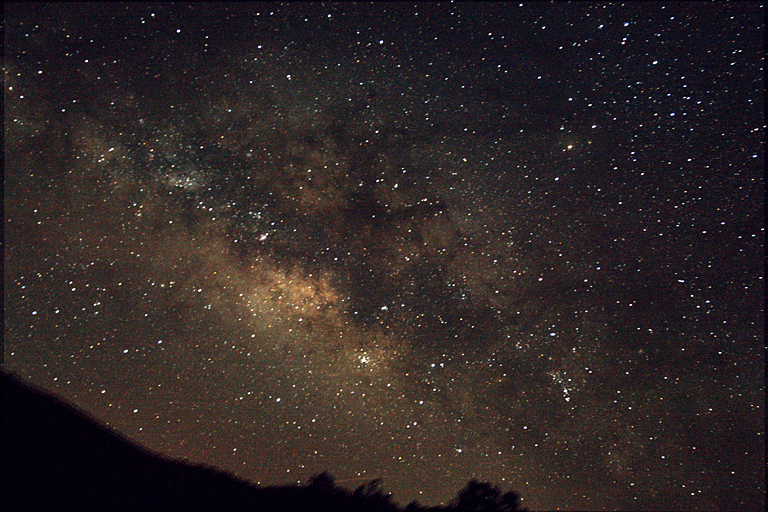By Galen Gisler and Didier Saumon
A recent editorial (“Dark skies are another draw for New Mexico,” SF New Mexican, Our View, Jan. 24) points out that the dark skies we enjoy here are a benefit to tourism as well as to the well-being of wildlife, human health and calming the soul. Seven International Dark Sky Parks are in our state, the newest being the Valles Caldera National Preserve, which achieved that prestigious status in 2021.
Unfortunately, most people in the world do not enjoy dark night-time skies and can see at most a handful of stars on a moonless night. With advances in lighting technology, the problem of light pollution is constantly getting worse. Modern LED lamps use much less energy and are much less expensive to operate than older technologies such as incandescent, mercury vapor or high-pressure sodium lamps. Municipalities and businesses therefore have an incentive to use more light than is needed.
Light pollution is light that is wasted or ill-used. Lights that are too bright produce dark shadows that can hide hazards. Lights that shine directly in our eyes cause glare that blind us and distract us from things we need to pay attention to. Badly positioned or poorly shielded lights shine into our bedrooms and disturb our sleep. Walk around our cities at night, and you will see examples of all of the above — on streetlights, on private residences and in parking lots that are very brightly lit long after activity ceases. Your walk will also show you numerous examples of good lighting, where doorways, sidewalks and roads are illuminated and distinguished by diffuse, non-glaring lights.
Currently there is an opportunity in Los Alamos to take action that will help to preserve and improve our dark skies. Architects and planners Dekker/Perich/Sabatini and the Los Alamos Community Development Department have released a draft of Module 2 of an update to the Los Alamos Development Code (Chapter 16 in the County Charter). This document is now up for public comment (see losalamosconnect.org) until March 15. The entire document is 172 pages long, of which a half-dozen pages are devoted to lighting.
The planners have done a commendable job in drafting a lighting ordinance that modernizes and improves the ordinance contained in Chapter 16-276 of the present County Charter. The draft includes site illumination limits (expressed in lumens per net acre), curfews for commercial and residential lighting, and appropriate roadway illumination guidelines from the Illumination Engineering Society.
There are a few points that can be improved still further.
The vast majority of streetlights in Los Alamos are of the high-pressure sodium type, which shine with a warm orange glow, and provide adequate light to guide traffic and protect pedestrians (and the deer that frequent our neighborhoods). Lighting professionals describe the color of lights with a number called correlated color temperature, or simply color temperature. The color temperature of the warm streetlights we are comfortable and familiar with is about 2200 K. There are LED streetlights available with color temperatures of 2200 K and below, but most common LEDs on the market have color temperatures much higher, 3000 K up to 5000 K. These higher color temperature lights shine with greater blue content and appear much whiter to our eyes. It is paradoxical but true that lights that appear “cooler” have higher color temperatures.
At the same luminosity, high color temperature lamps seem brighter because our eyes are more sensitive to blue light than to red. But our heightened sensitivity to blue means when we look away from those bright lights into the shadows, we lose our adaptation to darkness and may miss seeing a hazard. The blue content is also reflected off pavements and scattered off dust and droplets in the air more efficiently, and contributes to glare, light trespass and sky-glow, even when the lamps themselves are fully shielded. Examples of such high color temperature LED lamps can be seen in the parking lots of businesses, schools and churches around town, and (notoriously!) on the approach to the roundabout where N.M. 502 enters Los Alamos.
We note that Santa Fe is in the midst of a streetlight conversion process, replacing older 2200 K high-pressure sodium fixtures with modern LED lamps of higher color temperature, saving energy but potentially increasing skyglow. We hope the lighting ordinance soon to be adopted by Los Alamos County might inspire the adoption of a roughly similar modern ordinance in Santa Fe.
In Los Alamos, let’s make the upper-limit color temperature lights the same as our existing high-pressure sodium streetlights, 2200 K. Alternatively, or in addition, let’s include a clause that eliminates the emission of blue light with wavelength shorter than 500 nm.

